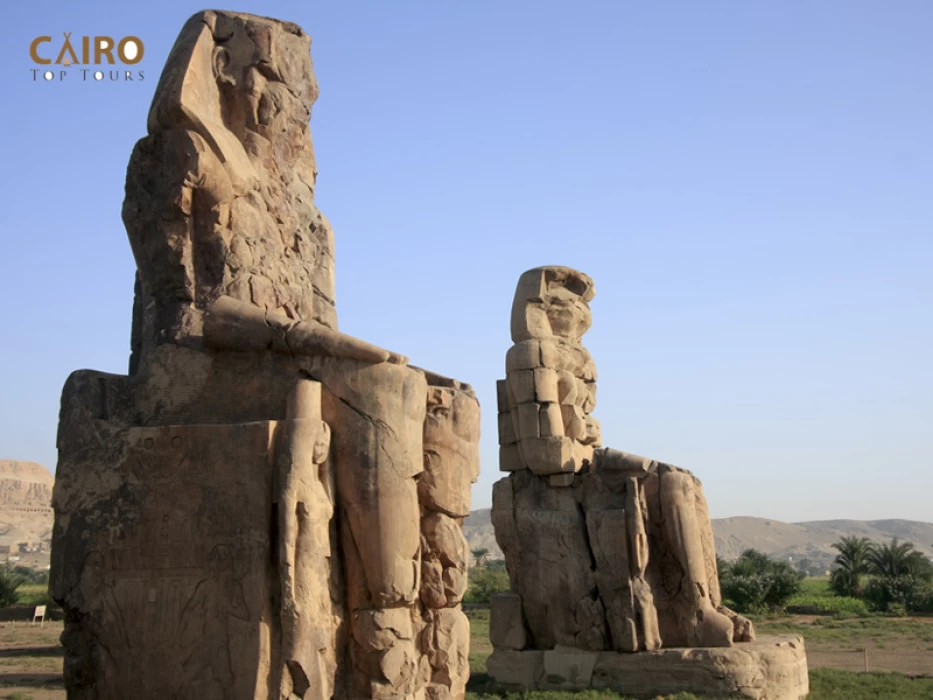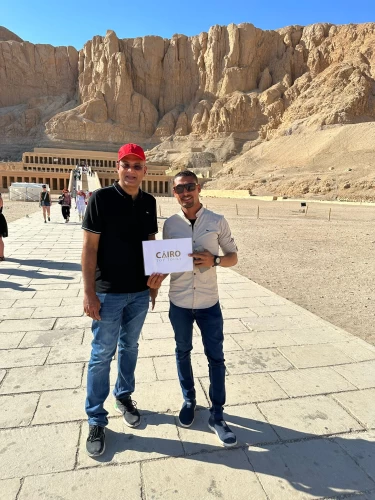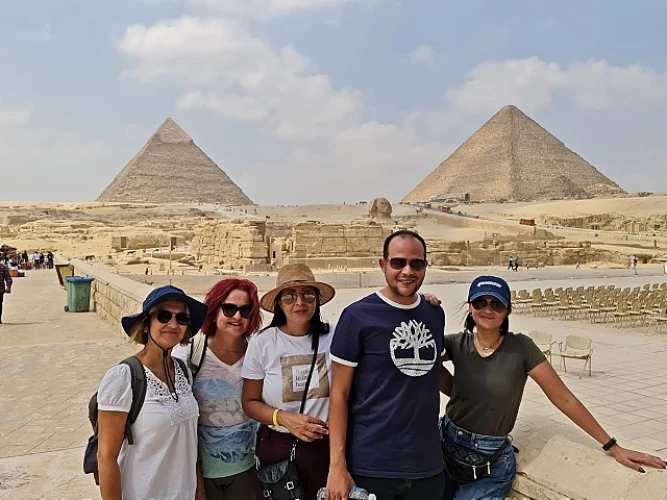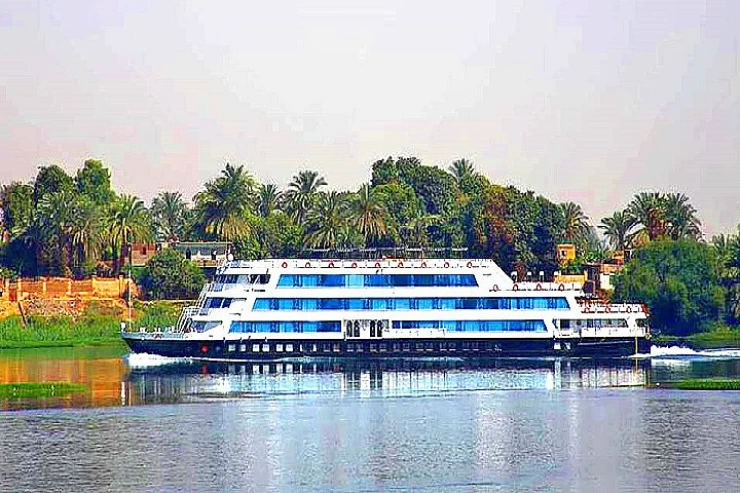
Colossi of Memnon
Colossal Statues of Amenhotep III in Luxor, Egypt
Colossi of Memnon description, they are two incredible huge statues of the Pharaoh Amenhotep III are now known as the Colossi of Memnon. This Pharaoh who ruled Egypt during the 18th Dynasty and was known as Amenhotep the Magnificent gave his Kingdom an epoch of prosperity and wealth in many fields and economic and artistic grandeur that Egypt had never seen before.
And you can find Colossi of Memnon location here
The two gigantic statues in Luxor portray King Amenhotep III seated and having his hands resting on his knees facing East towards the Nile River, Another two figures but shorter in size for his wife Queen Tiye and his mother Mutemwiya are sculptured at the front throne near his legs, and a scene for Hapi, the Nile god is carved at the side panels.

The Nile God Hapi | The God of Fertility | The God of the North and South

Those statues are built out of blocks of quartzite sandstone that were quarried from the Red Mountain near Cairo and had been transported 675 km overland to Thebes (Luxor nowadays). The stones are believed to be very heavy to be transported on the Nile and the blocks used by later engineers to rebuild the northern statue may have been quarried from Edfu in the North of Aswan.
The two colossal statues are in a bad condition but you cannot miss a visit to such enormous twin statues when you visit Luxor through one of our Egypt Travel Packages or Egypt Day Tours.
Have a blissful tour of the East and West banks of Luxor if you're planning any tours to Egypt.
Both two statues look a lot identical, though, they differ in small details and inscriptions from each other. They stood at this specific place to function as guardians to the entrance of Amenhotep’s mortuary temple which the Pharaoh himself constructed the temple to be worshipped on Earth before and after his departure from this world.
The mortuary temple of Amenhotep III used to be the biggest and widest of its time even Karnak Temple itself did not get to compete with Amenhotep’s mortuary Temple which was covering a total of 35 hectares (86 acres).
The city of Luxor, one of Egypt's most important tourist attractions, features numerous Pharaonic monuments associated with the civilization of the ancient Egyptians thousands of years ago. Among the monuments dating back to the Pharaonic civilization of the city of Luxor are the two statues of gratitude. Come to Egypt and discover their features for yourself.
If you want to know more about Howard Carter's House | The Discoverer Of Tutankhamun's Tomb, the person who found King Tutankhamun's tomb, you can go there and imagine what it was like to live in ancient Egypt and feel how great it was.


















